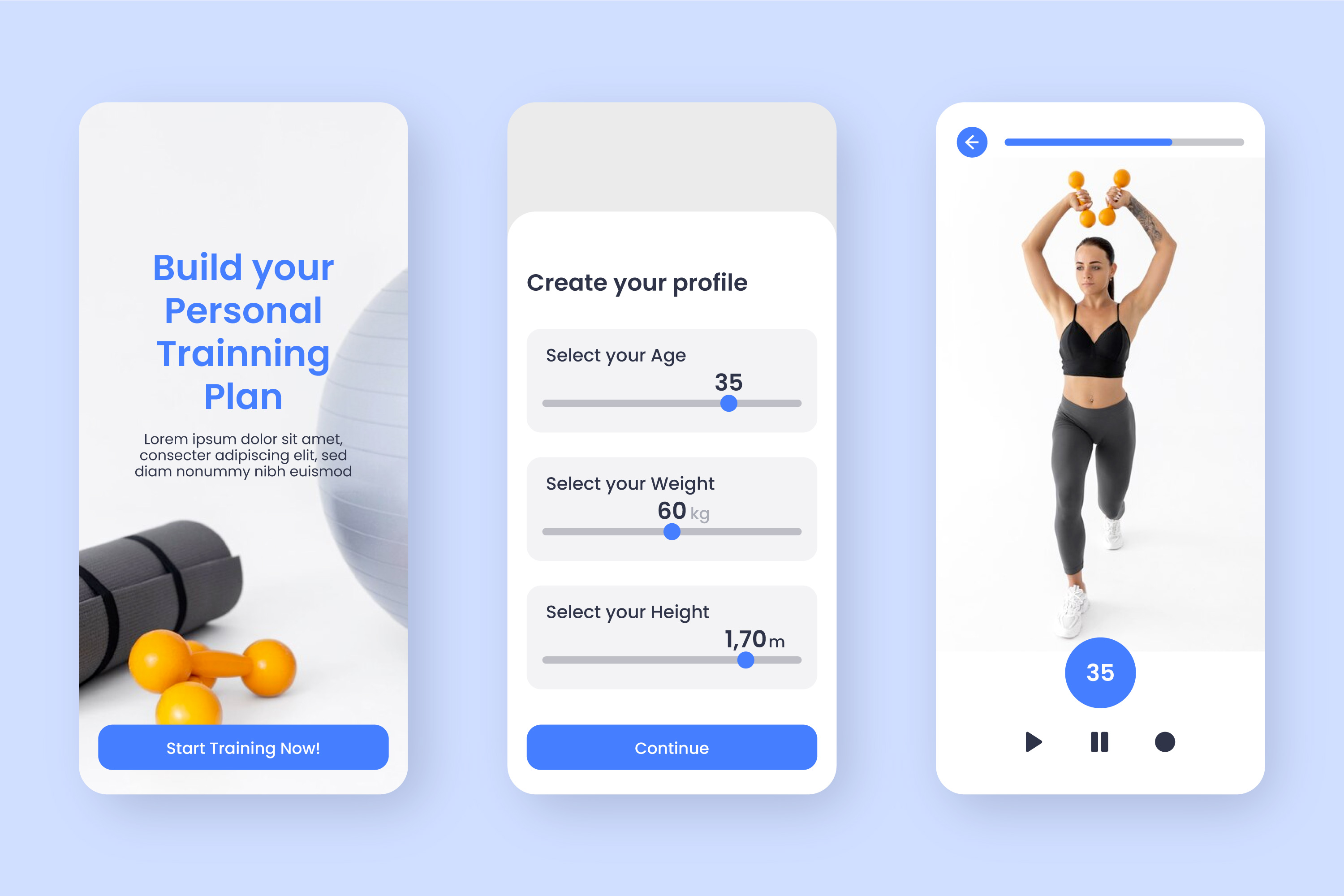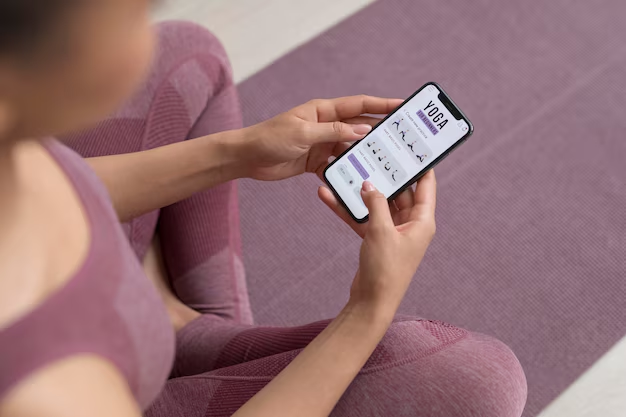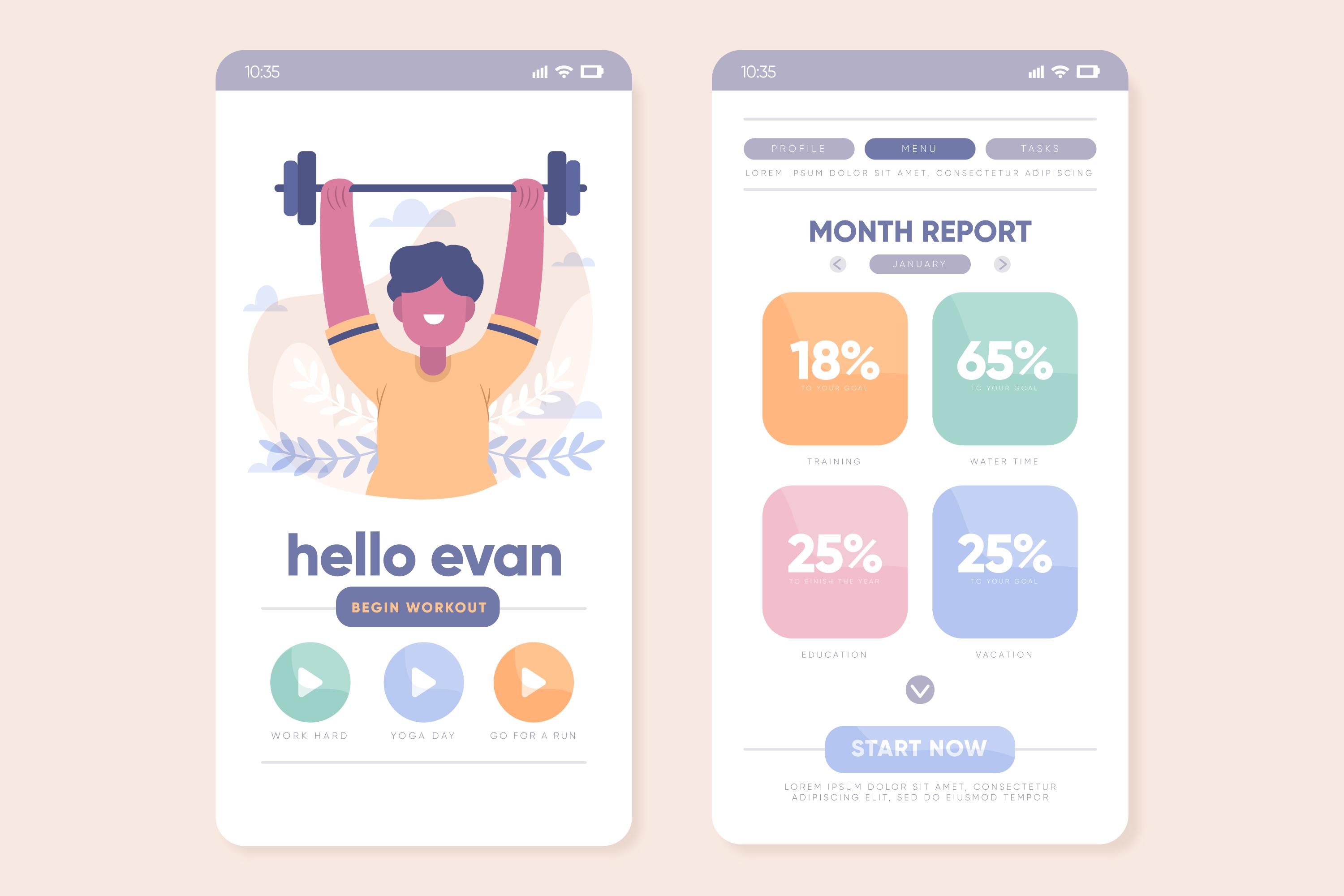Building your own fitness app is worth the effort because more people today prefer exercising at home or outside the gym. They need clear guidance and tools that fit into daily life. A well-built app can provide structure and motivation, which are often missing when someone trains alone. Fitness apps earned $3.98 billion in revenue in 2024, marking an 11.1% rise compared to the previous year.
Building a fitness app is also necessary because the market keeps growing. People search for simple digital solutions that help them stay healthy, and fitness apps meet that need.
Make a Fitness App: Choosing the Right Platforms
When you think about creating a fitness app, the first question is not only about design or features. It is about where the app will run. The choice of platform changes how people use it and how easy it is to reach them. A fitness app can be built for mobile, web, or wearables. Some options are very common, others are used only for special cases. Knowing the difference helps avoid building on the wrong ground.

Mobile Platforms
Mobile platforms are the center of fitness apps. Most people today carry a smartphone, and this is where they track workouts, calories, or daily activity. The two main platforms for mobile app development are Android and iOS. Each has a clear role and a clear type of user:
- Android is the largest in terms of audience. It covers many countries and many devices. If the plan is to reach people across the globe, Android gives the widest door. It is flexible, and it works on a huge range of phones and tablets. The drawback is that there are many versions and many screen sizes. Testing takes longer, and sometimes the app will not look the same on every device. Still, if you want scale, Android is often the first choice.
- iOS has a smaller share of the market but often gives higher income per user. Apple users are more common in North America, Western Europe, and parts of Asia. They expect a clean design and simple function. Because there are fewer devices, testing is easier, and the look of the app is more stable. A fitness app on iOS is often a good idea if the target audience is ready to pay for premium content or a subscription.
Both Android and iOS are good on their own, but many businesses want to cover both. In that case, there is cross-platform development. With React Native or Flutter app development, one codebase can work for both systems. Creating a fitness app saves time and cost. Performance is close to native apps, and for a fitness app that does not need heavy 3D or very complex sensors, cross-platform is often the practical answer. It is not always perfect, but it is used by many companies that want to launch faster without building two separate apps.
Web and Progressive Web Apps
Some fitness apps do not need to live only inside the app store. A web app can be opened in a browser. It works on a laptop, tablet, or mobile phone. This is useful if the service is more about content, for example, meal plans, articles, or video guides. People can check it without downloading, and updates happen instantly.
A step further is the progressive web app, or PWA. It looks more like a mobile app, but it still runs from the web. Users can add it to their home screen, open it offline, and receive notifications. It is cheaper to build and easier to update. For many new projects, PWA gives a way to test the idea before investing in a full native app. It does not use all phone sensors in the same way, so it is not good for deep tracking or advanced features, but it is enough for many simple fitness services.
Wearable Devices

Wearables are a natural fit for fitness. Smartwatches and bands can track heart rate, steps, sleep, and workouts. Apple Watch, Galaxy Watch, and Fitbit all have their own systems for apps. A fitness mobile app development that includes quick actions or daily monitoring can use this platform to give users fast access without opening their phone.
Wearable apps rarely stand alone. They usually work with a mobile app that handles more complex features. For example, a user can start a workout on the watch but later view detailed results on the phone. If you plan to build a fitness app, adding wearable support makes sense when tracking is a core part of the service. It is not a must, but it can add value for users who already use these devices every day.
Cloud and Multi-Device Access
Fitness apps are no longer tied to one device. Many users expect to log activity on the phone, check results on a laptop, and get reminders on a watch. This is where cloud-based systems are needed. Cloud storage keeps records, progress, and preferences safe and available on different devices.
For the user, it means they can start a workout on one screen and continue somewhere else. For the business, fitness mobile app development gives a chance to offer more than a single app. A fitness brand can have a mobile app, a web app, and wearable support, all linked through the cloud. This approach takes more planning and more cost, but it is what many leading apps already use. It is not a platform on its own but a way to make the app work across platforms.
What Does Not Fit
Some platforms sound useful, but are not very common for fitness apps. Desktop apps are one example. Most users today do not want to manage their workouts from a computer. A desktop tool can still be built for trainers or gyms, but for personal fitness, it does not fit well.
Another platform that is less relevant now is the hybrid app built with old frameworks like PhoneGap. These once offered a quick way to build for both Android and iOS, but they are slower and harder to keep up to date. Cross-platform frameworks now cover this need better.
Embedded apps inside machines like treadmills or smart mirrors are also possible, but only for companies that produce hardware. For most fitness startups or independent developers, this path is not realistic.
Fitness mobile app development is not only about what features to include but also about choosing the right platforms.
Developing a Fitness App: Cost Factors to Know
The cost of creating a fitness app depends on a few key things. Some are about technology, others about design or support. It is not possible to fix one price for all projects. Instead, you need to look at the main factors that change the budget:
- Platform choice: $15,000–$50,000. The first step of creating a fitness app is to decide if the app will run on Android, iOS, or both. Building for one platform is always cheaper than building for two. Android gives a wide reach in many countries, but requires testing on many devices. iOS has fewer devices, which makes testing easier, but the audience is smaller. If you choose to cover both, the cost goes up. Some projects use cross-platform frameworks to reduce the time, but it is still more than building for one system.
- Features: $10,000–$120,000. A small app with workout timers and exercise tips will be cheaper than an app with streaming, tracking, and social functions. Every new feature means more time for coding and testing. Storing progress, building charts, or connecting to a coaching service all add more layers. Features that depend on real-time use, like video calls or live classes, push the cost higher.
- Desig: $5,000–$40,000. Design changes the budget in a big way. If the app uses basic layouts and ready elements, it will cost less. A custom design with new icons, smooth animations, and detailed screens adds more hours of work. Fitness apps are used daily, so design matters. The choice is between simple and affordable or custom and more costly.
- Wearable integration: $10,000–$25,000. Many people use smartwatches or fitness bands. Connecting the app to these devices can make it more useful but also more complex. Each device has its own system. Linking heart rate, steps, or sleep data takes more time and raises the cost. If the app is built only for mobile use, the budget will be lower.
- Backend and cloud: $15,000–$80,000. Apps that save data only on the phone are cheaper. But most users want to see their progress across devices. For this, a backend with servers and cloud storage is needed. Building and running this system adds to the cost. It also means paying for hosting and support after launch.
- Content: $2,000–$5,000 for setup. Fitness apps often include videos, images, or guides. If you already have this content, the cost is smaller. If the content has to be created, filmed, or edited, the budget grows. Large files also need storage and good delivery speed, which adds more work.
- Development team location: $30–$150+ per hour. Where the team is based makes a big difference. Fitness app creators in North America or Western Europe charge more per hour than teams in Eastern Europe, Asia, or Africa. The final price depends not only on the app but also on where the work is done.
- Maintenance: 15–20% of the initial budget per year. The work does not end when the app is released. Phones update often, and apps must be updated too. Bugs will appear and have to be fixed. Users expect new features. This means a part of the budget must always go to support and updates.
The cost of creating a fitness app is shaped by these factors. Platform, features, design, wearables, backend, content, team location, testing, and maintenance. Each of them adds weight to the budget. The final price depends on how many of these parts are included and how far you want the app to go.

How to Create a Fitness App
A fitness app is just a tool. Developing a fitness app helps people train, track, or follow a plan. Making one is not magic. It is a set of steps that takes an idea and turns it into something people can use.
Step 1: Know the purpose
You start making a fitness app by asking a simple question. What is this app for? Some people want a workout timer. Others want food tracking. Some want both. Without a clear purpose, the app will feel empty. Write it down. Even one sentence is enough.
Step 2: Look around
There are thousands of fitness apps already. Some are good, some are not. Open them, read the reviews. People complain about small things, like too many ads or messy menus. They also say what they enjoy. This shows you where to improve. Copying is useless, but learning from mistakes is not.
Step 3: Pick where it runs
Now, think of the platform for health and fitness app development. Android, iOS, or both. Building for one is faster. Covering both means more work, more cost, more testing. Cross-platform can be a middle ground. Some even make a web version, but only if the app is about content and not sensors. The choice here decides half of the budget.
Step 4: Decide on the features
List what the app really needs. A timer. A log of past workouts. A simple reminder. That may be enough to start. Extra things, like videos or coaching, can wait. Many apps fail because they try to do too much at once. Less is easier to build, easier to test, and easier to use.
Step 5: Design the screens
Design in making a fitness app means how people move from one screen to another. It does not need to be fancy. Simple menus, clear buttons. That already works. A custom look with animations and icons costs more, takes longer. Sometimes, plain design is better because users are trained and do not want to fight the interface.
Step 6: Build it
This is where developers code. They put the plan into action. If the app needs cloud storage or syncing, servers must be set up. Building can be done in steps. First, a basic version, then add more. Trying to finish everything at once often creates problems.
Step 7: Test on real phones
Testing matters. Fitness apps are often opened in the middle of activity. If the timer fails, people stop using it. Bugs, frozen screens, and confusing menus all need fixing. Test on real devices, not only in simulators. Even small issues can ruin the user’s trust.
Step 8: Release and listen
When the app is ready enough, release it. The first version will not be perfect. Users will complain. That is normal. Feedback is useful. It tells you what to change next. Do not wait for perfection before release, or the app may never leave the desk.
Step 9: Keep it alive
An app is not finished after launch. Phone update. Users expect improvements. Bugs will appear. Updates must be part of the plan. An app without updates soon disappears from people’s screens. Maintenance is not extra work; it is the real work after the start.
The steps of creating a fitness app are simple. Purpose, research, platform, features, design, build, test, release, maintain. Each shapes the app in its own way. The order is clear, but the process is never smooth. That is normal. A fitness app grows one step at a time.
